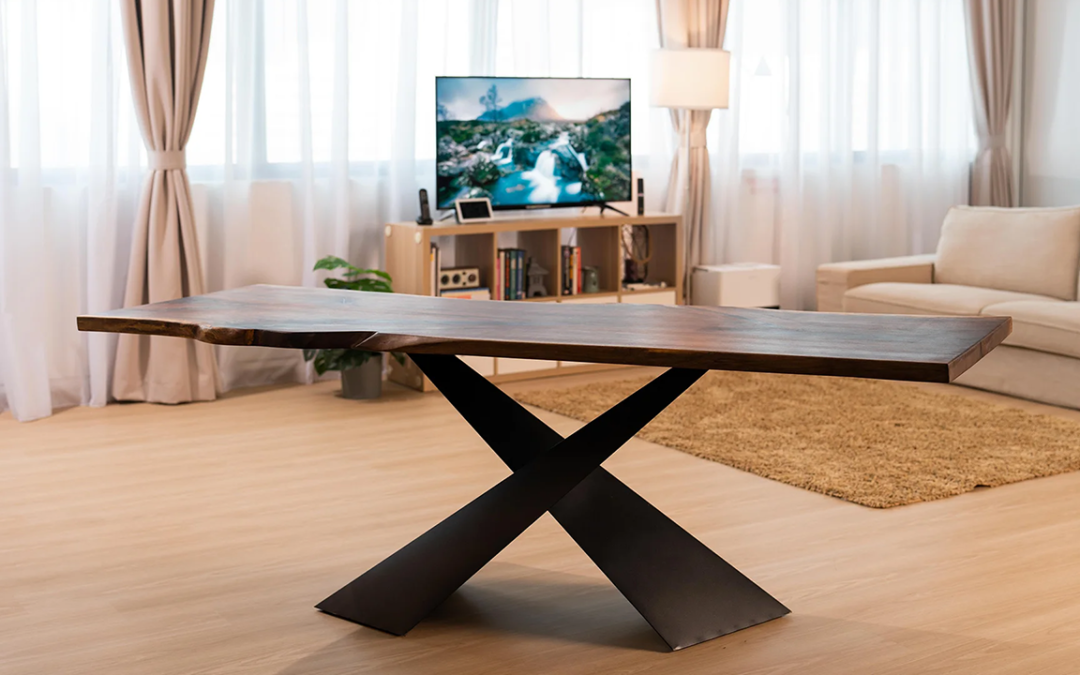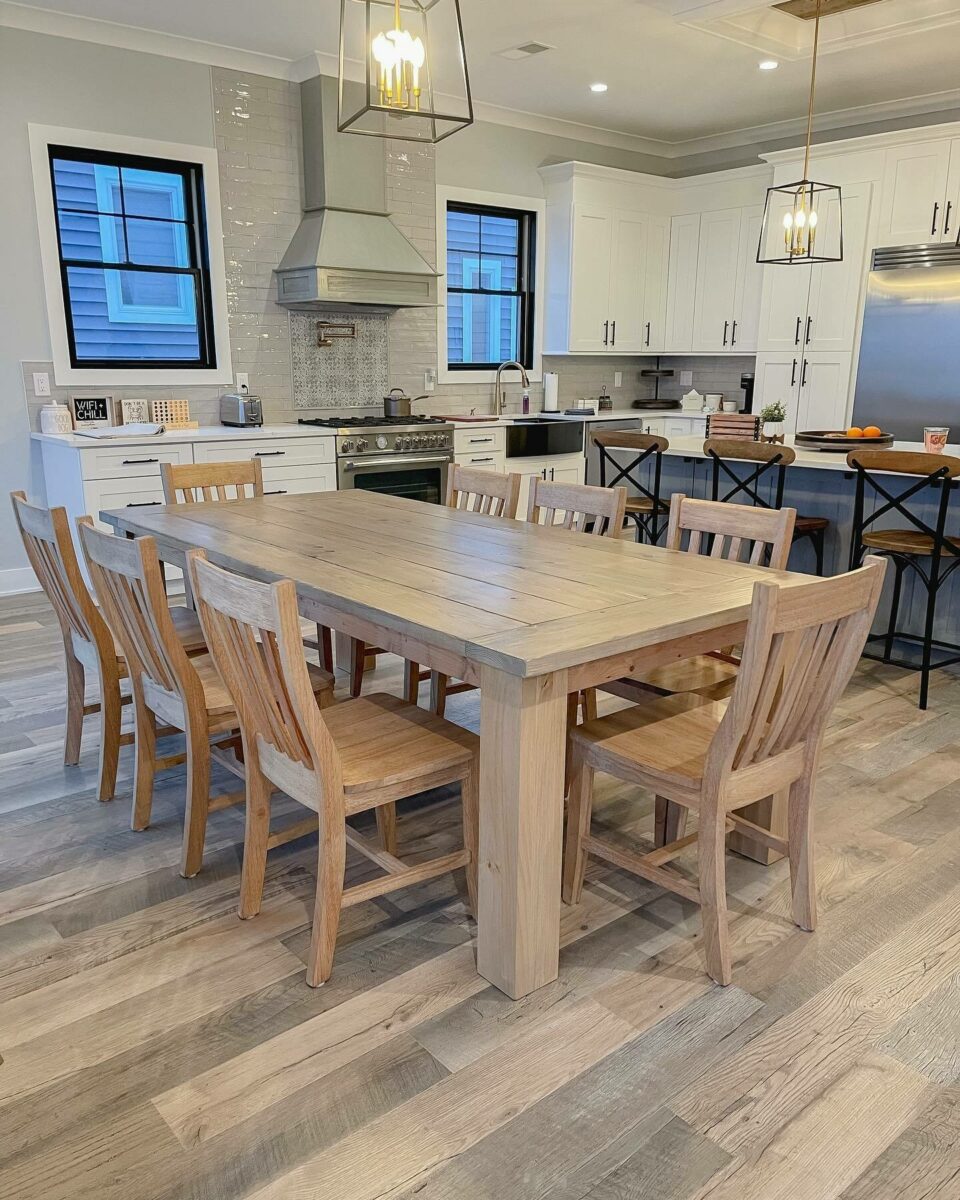Discovering Various Styles for Dining Room Table Legs to Match Your Visual
Discovering Various Styles for Dining Room Table Legs to Match Your Visual
Blog Article
Picking the Perfect Table: What Styles Work Best for Your Home?
Picking the suitable table for your home can be a nuanced procedure that balances visual appeals and capability. Whether your area leans towards standard beauty, modern-day minimalism, rustic appeal, or industrial trendy, the variety of designs offered can provide to diverse preferences. Each design supplies distinct advantages and difficulties that can either boost or disrupt your eating area's consistency. Recognizing how different materials, forms, and sizes engage with your existing decor is vital. To navigate these options effectively and discover a table that absolutely complements your home, consider the complying with aspects in information.
Assessing Your Space
Examining the measurements and layout of your dining area is a critical initial step in choosing the excellent eating table. Begin by measuring the length and width of the space, making up doorways, home windows, and other building features that could influence table placement. This makes certain that your table not just fits yet also allows for comfortable motion around it.
Consider the variety of individuals you normally delight. A table needs to suit your household's daily needs while offering enough adaptability for occasional guests. As a rule of thumb, allot at the very least 24 inches of table width each to guarantee a comfortable dining experience.
It's likewise necessary to preserve proper clearance around the table. Ideally, there ought to be at least 36 inches between the table edge and wall surfaces or various other furnishings, making it possible for simple accessibility and motion. For rooms where chairs with arms or added storage space systems like buffets are involved, increasing this clearance to 48 inches is advisable.
Lighting and ambience play considerable roles as well. Ensure that your table straightens with existing illumination fixtures or prepare for ample lights services. This extensive spatial assessment warranties that your table not only fits literally however also integrates with your space's general capability and visual.
Popular Table Styles

Conventional table often feature elaborate information, bent legs, and rich wood surfaces, stimulating a feeling of timeless beauty. They are best for homes with timeless decor or those wanting to include a touch of refinement to their eating area.
Modern dining tables prioritize simplicity and clean lines, commonly including materials like glass and metal. These tables are perfect for contemporary areas, supplying a streamlined and minimalist appearance that matches minimalist style philosophies.
Rustic dining tables, on the other hand, stress all-natural materials and a handcrafted appearance - dining room table legs. They usually feature redeemed wood and a distressed finish, creating a cozy and inviting ambience. These tables work well in farmhouse-style homes or those looking for a relaxing, organic feeling
Industrial check these guys out eating tables integrate basic materials such as steel and wood, usually showcasing an utilitarian visual. This design is fit for loft spaces or metropolitan areas, adding a touch of sturdy appeal and toughness to the eating experience.
Each style provides distinct advantages, making it necessary to choose one that straightens with your home's overall style and your personal preferences.
Product Options
When selecting a table, the selection of product plays a vital function in establishing both the table's visual appeals and capability. Timber, steel, glass, and composite materials each deal one-of-a-kind benefits and challenges, making it important to straighten the material with your home's decor and way of living requirements.
Wood is a classic and flexible option, readily available in ranges such as oak, walnut, and mahogany. Known for its longevity and warmth, wood enhances both standard and contemporary insides. It requires regular upkeep to prevent scrapes and warping.
Steel tables, typically crafted from stainless-steel, light weight aluminum, or functioned iron, are praised for their modern allure and robustness. They are great post to read especially matched for commercial or minimalist settings however can be prone to dents and might feel cool to the touch.
Glass table bring an air of style and openness, suitable for smaller sized spaces as they produce an illusion of more area. While easy to tidy, glass can be susceptible to smudges and calls for careful dealing with to stay clear of chips and cracks.
Composite products, such as MDF and plywood, deal affordable and personalized solutions, though they might do not have the long life of all-natural products. Selecting the best product ensures your dining table is both a functional possession and an aesthetic joy.
Shape and Dimension Factors To Consider
After establishing the proper material for your table, the next consideration is choosing the right sizes and shape to fit your area. The form of the table significantly influences the space's visual and capability. Rectangle-shaped tables, one of the most common shape, are suitable for bigger rooms and can accommodate a greater number of guests. They also enable for a much more official eating experience. Alternatively, rounded tables foster a feeling of affection and are outstanding for smaller dining locations, motivating discussion by removing edges and making everyone feel equally included.
As a guideline of thumb, allocate at the very least 24 inches of table width per individual to make certain comfy dining. In addition, think about the table's clearance area: there need to be at the very least 36 inches in between the table edge and the wall surfaces or other furniture. Expanding tables supply adaptability if you regularly organize bigger gatherings, supplying added seats when required without occupying added room daily.
Matching Your Decor
Selecting a table that integrates with your existing style is crucial in developing a natural and inviting space. Begin by assessing your current interior layout style, whether it be modern, traditional, rustic, or eclectic. The table need to complement the general aesthetic, not take on it. For circumstances, a sleek, minimalist table with clean lines is suitable for a modern home, while a vintage, ornate table fits a much more standard setting.
Shade and product are similarly considerable. If your decoration includes warm tones and all-natural materials, take into consideration a wood find out here now table to improve the natural feeling. On the other hand, a glass or steel table may be better suited in an area controlled by amazing colors and industrial elements. Focus on the coating, as it needs to mirror other furnishings and components to maintain harmony.
Structure plays an important role. A rough-hewn, redeemed timber table can add personality to a rustic space, while a polished marble surface area can elevate a glamorous dining location. Consider the scale and percentage of the table in relation to the room dimension and existing furniture. A well-matched eating table not only improves visual charm but also enhances the general dining experience.

Verdict
Selecting the optimal eating table demands cautious consideration of area, design, materials, form, and size. Standard tables enhance traditional insides with rich timber surfaces, while modern-day tables suit modern settings with glass and metal.
Report this page